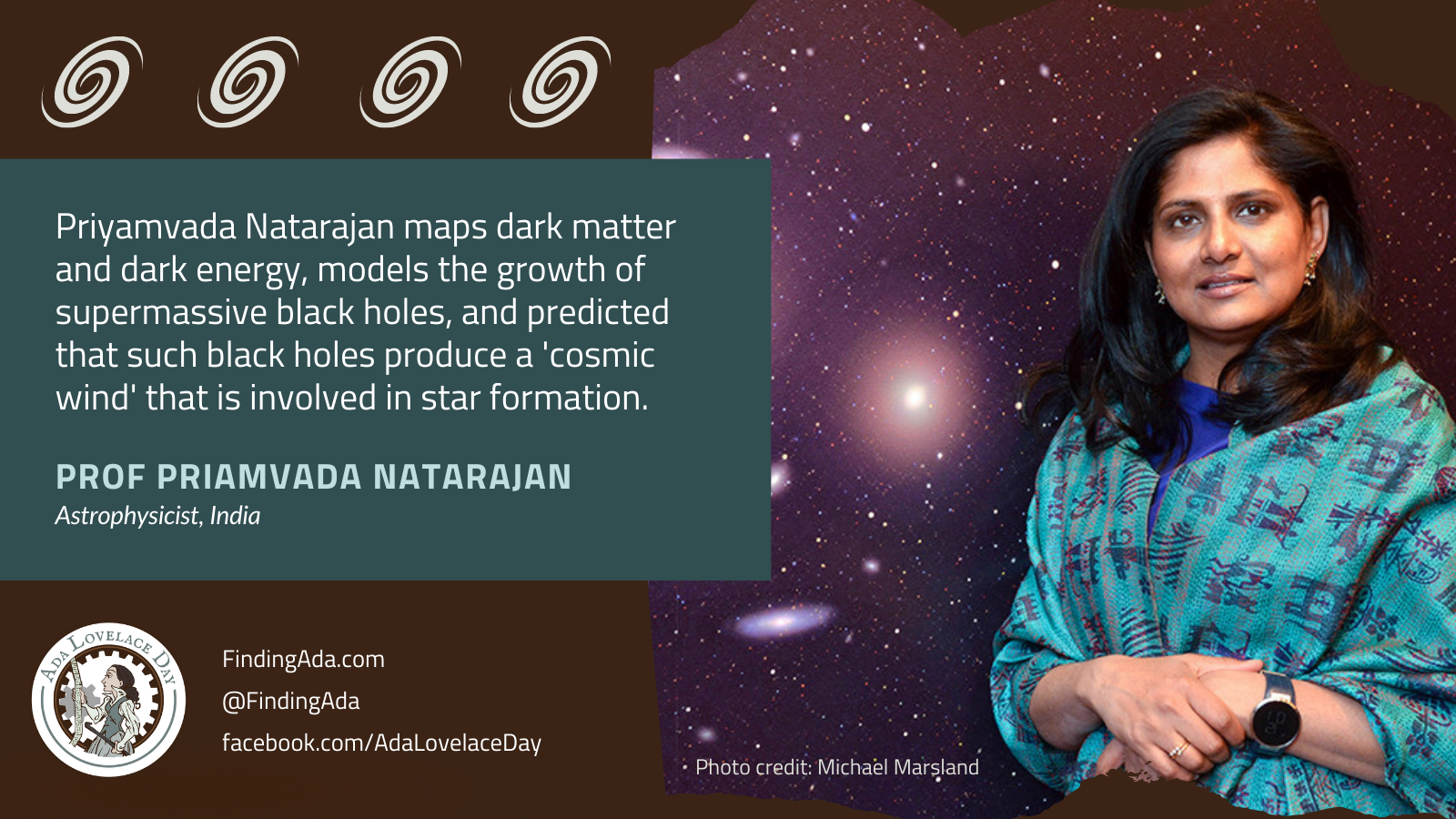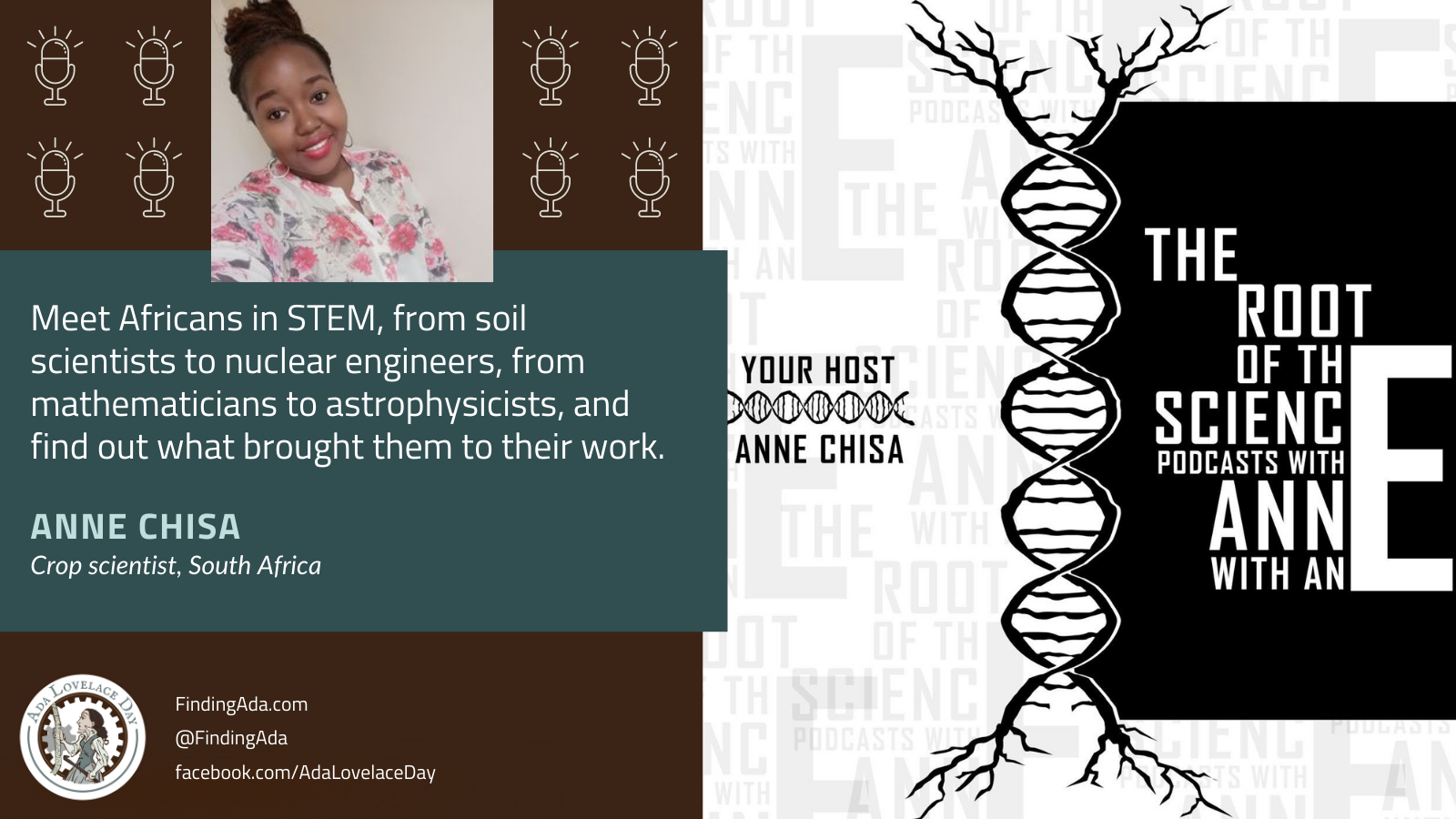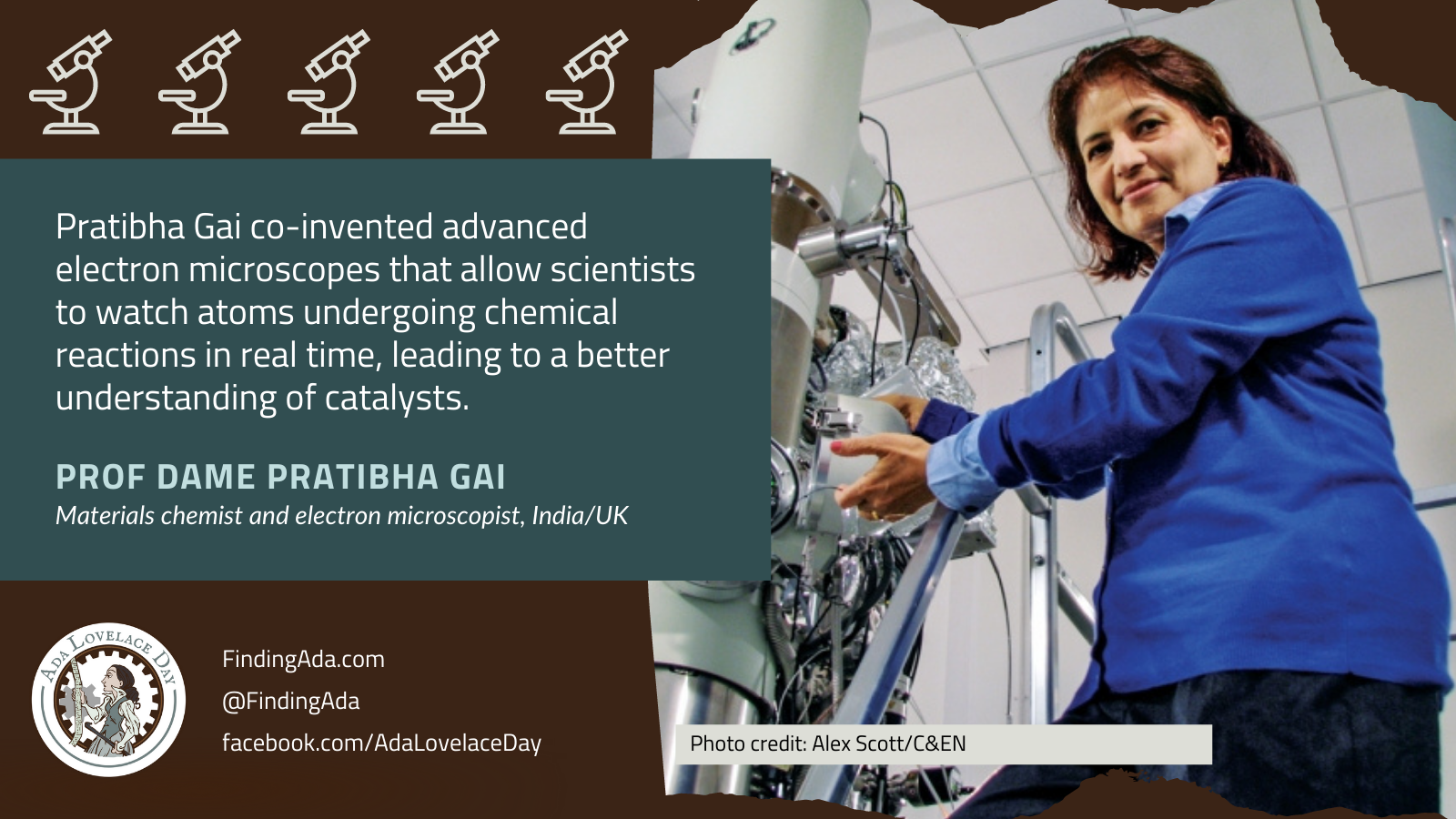
Professor Priyamvada Natarajan
Professor Priyamvada Natarajan is a theoretical astrophysicist at Yale University who has worked in a variety of fields such as gravitational lensing, galaxy formation and supermassive black holes. She developed a way to map dark matter using gravitational lensing, or the bending of light around galaxies. Her techniques for developing dark matter maps are now standard in cosmology.
She loved astronomy from a young age, eventually doing computations for the Nehru Planetarium, India, after she impressed the director with a program she had written to plot sky maps.
Natarajan got her PhD in 1998 from University of Cambridge, and was elected to a fellowship at Trinity College, the first woman in astrophysics to achieve this. During her graduate research, she wrote a paper predicting that supermassive black holes would create a “black hole wind”, blowing stellar material thousands of light years away. This gas would then accrete and form stars, resulting in galaxies and globular clusters that were short of dark matter. This theoretical prediction was later proven correct by a team of researchers at the National Radio Astronomy Observatory, Virginia, in 2019.
She became a professor at Yale University, where she explored the formation of bright quasars that are powered by huge black holes, but which were formed early in the history of the universe, at the same time that stars were beginning to form. She suggested a process to explain how these black holes may have formed, without an accretion of stellar material, via the “direct-collapse” of gas disks. This process is now considered to be one of the main ways in which black holes form.
In 2009, Natarajan became a fellow of the Royal Astronomical Society, received a Guggenheim Fellowship, and won India’s “Face of the Future” award. She received an India Empire NRI award for Achievement in the Sciences in 2011, and more recently, the University of Delhi gave her a lifetime honorary professorship. She is also active in supporting women in STEM, acting as Chairman for Yale’s Women Faculty Forum.
You can follow her work here:
Twitter: @sheerpriya
LinkedIn: linkedin.com/in/priya-natarajan-66b0215
Website: campuspress.yale.edu/priya/
Further reading
- Priyamvada Natarajan, Wikipedia
- Astrophysicist Says Experiments Might Soon Reveal Dark Matter’s “True Nature”, John Horgan, Scientific American, 8 December 2016
- Yale Physicist to Deliver 10th Annual Wali Lecture Oct. 26, Rob Enslin, Syracuse University News, 19 October 2017
- A Yale astrophysicist’s prediction comes to pass — 20 years later, Jim Shelton, Yale News, 4 February 2019
- An Astrophysicist Who Maps the Universe’s Terra Incognita, Natalie Wolchover, Quanta Magazine, 4 February 2019
- When Black Holes Burp, Stars Sense It, Science Friday, 22 February 2019
- Ask me anything: Priyamvada Natarajan, Tushna Commissariat, Physics World, 25 March 2020
- Yale astrophysicist on unlocking the mystery of black holes and dark matter, CBC, 15 May 2020
- Meet the AAS Keynote Speakers: Dr. Priyamvada Natarajan, Mia de los Reyes, Astrobites, 13 January 2021
- From Black Holes to Dark Matter, Theoretical Astrophysicist Priyamvada Natarajan Confronts Theoretical Ideas with Observations, Alexandra Kirby Scammell, American Association for the Advancement of Science (AAAS), 29 January 2021
- The Invisible Universe: Priyamvada Natarajan Public Lecture (video), Priyamvada Natarajan, The Perimeter Institute for Theoretical Physics, 4 March 2021



